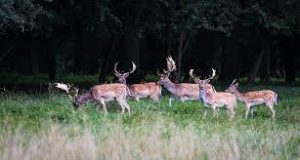Framing the Wild: Mastering the Art of Patient Wildlife Photography
 Capturing the raw beauty of wildlife through a lens requires more than just technical skill—it demands a deep understanding of nature’s rhythms and a patient spirit. In this pursuit, individuals like Cody Moxam, a psychology major at the University of Colorado Boulder, have demonstrated a unique mastery of patient wildlife photography. Through his work, Moxam showcases that success in this art form hinges on a delicate blend of technical prowess, environmental awareness, and an unwavering respect for the subjects.
Capturing the raw beauty of wildlife through a lens requires more than just technical skill—it demands a deep understanding of nature’s rhythms and a patient spirit. In this pursuit, individuals like Cody Moxam, a psychology major at the University of Colorado Boulder, have demonstrated a unique mastery of patient wildlife photography. Through his work, Moxam showcases that success in this art form hinges on a delicate blend of technical prowess, environmental awareness, and an unwavering respect for the subjects.
One of the key elements that set wildlife photography apart is the need for an extraordinary amount of patience. Animals, unlike human subjects, operate on their own schedules, often in harmony with the rhythm of their habitat. As a psychology major, Moxam understands the intricacies of patience in a holistic sense. He recognizes that studying animal behavior and immersing oneself in their environment is crucial for anticipating their actions and reactions, ultimately resulting in that perfect shot. Waiting for hours, or even days, to capture a single moment becomes a meditative practice—an alignment of the photographer’s mindset with the world of the wild.
Moxam’s journey as a psychology major intersects intriguingly with his passion for photography. The analytical mindset cultivated in his field of study allows him to approach photography with a methodical eye. This approach is especially valuable when dealing with the challenges of lighting, focus, and composition in unpredictable outdoor settings.
Cody Moxam’s work not only demonstrates an understanding of the technical but also highlights the essence of conservation photography. The careful approach he employs is indicative of a broader consciousness—an awareness that human presence can disrupt the natural balance. His images speak to the importance of respecting animals’ space and capturing their beauty without causing harm or distress. As a psychology major, Moxam comprehends the psychological impacts of human intrusion on wildlife. This awareness guides his actions, reminding fellow photographers that responsible practices are vital for the well-being of the subjects and their habitats.
In the realm of patient wildlife photography, Cody Moxam’s commitment to both his academic journey and his photographic pursuit exemplifies the intricate fusion of art and science. His ability to harness the power of patience, merge it with technical acumen, and channel it through the lens results in stunning captures that freeze the untamed world in time. His story serves as an inspiration for aspiring wildlife photographers, emphasizing that success lies not only in mastering the equipment but also in immersing oneself in the world being photographed.
In conclusion, Cody Moxam’s journey as a psychology major at the University of Colorado Boulder beautifully intertwines with his passion for patient wildlife photography. Through his patient approach, technical skill, and conservation consciousness, he showcases the symbiotic relationship between man and nature, framed meticulously through his lens. Aspiring photographers can undoubtedly draw valuable insights from Moxam’s methodology, understanding that in the realm of wildlife photography, waiting for the right moment is an art form in itself.
